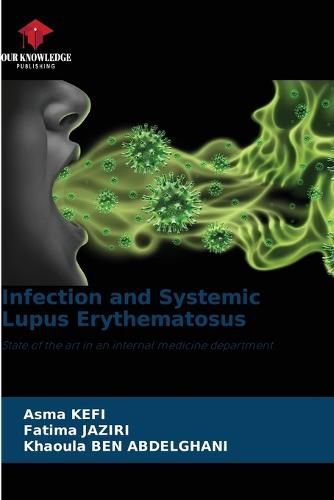Readings Newsletter
Become a Readings Member to make your shopping experience even easier.
Sign in or sign up for free!
You’re not far away from qualifying for FREE standard shipping within Australia
You’ve qualified for FREE standard shipping within Australia
The cart is loading…






With the advent of new therapeutics and the better knowledge of the pathophysiology of systemic lupus erythematosus (SLE), we are witnessing a change in the causes of death: if in the past, patients died more following a relapse of their disease, nowadays other causes such as infection and atherosclerosis are added to and sometimes replace the lupus relapse in terms of mortality. Today, infection is one of the main causes of mortality and morbidity in SLE. In this work, we propose to determine the frequency, the particularities and the predictive elements of the occurrence of infectious complications in SLE. For this purpose, we conducted a retrospective study including 70 lupus patients hospitalized in our department between January 2000 and January 2013. The group of patients with a definite infection was compared with the group without infection. We collected 52 women and 18 men with a mean age at 29 years. Forty-nine patients (70%) had presented 96 infections. Bacterial infections were the most frequently observed.
$9.00 standard shipping within Australia
FREE standard shipping within Australia for orders over $100.00
Express & International shipping calculated at checkout
With the advent of new therapeutics and the better knowledge of the pathophysiology of systemic lupus erythematosus (SLE), we are witnessing a change in the causes of death: if in the past, patients died more following a relapse of their disease, nowadays other causes such as infection and atherosclerosis are added to and sometimes replace the lupus relapse in terms of mortality. Today, infection is one of the main causes of mortality and morbidity in SLE. In this work, we propose to determine the frequency, the particularities and the predictive elements of the occurrence of infectious complications in SLE. For this purpose, we conducted a retrospective study including 70 lupus patients hospitalized in our department between January 2000 and January 2013. The group of patients with a definite infection was compared with the group without infection. We collected 52 women and 18 men with a mean age at 29 years. Forty-nine patients (70%) had presented 96 infections. Bacterial infections were the most frequently observed.